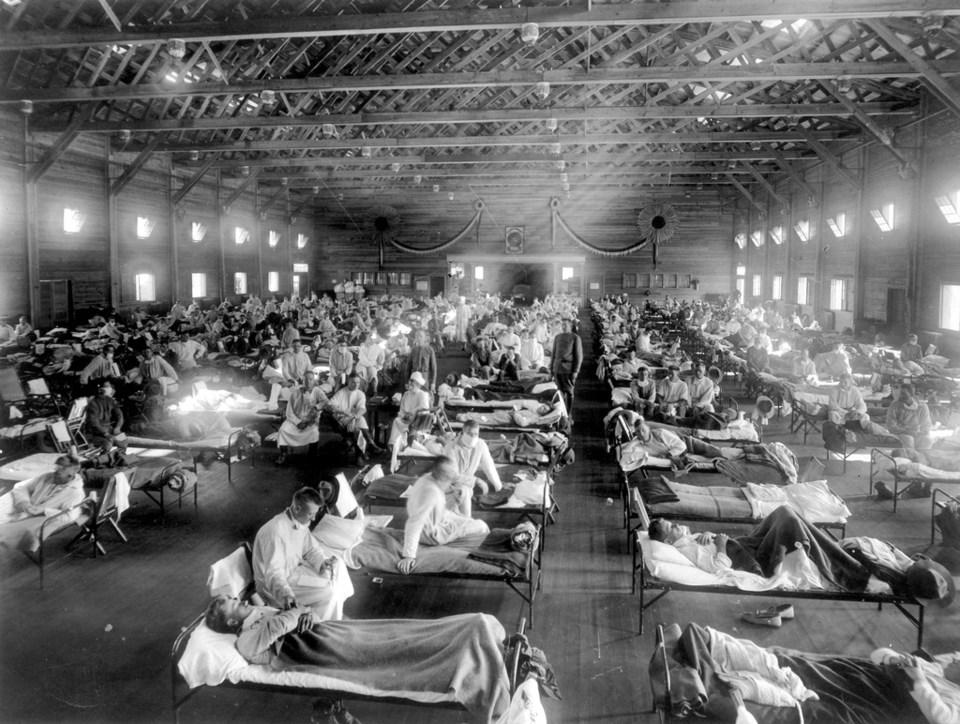As we reach the mid-point of 2021, many are hopeful the toughest parts of last year’s pandemic are a thing of the past. As the COVID-19 experience remains fresh in the public’s memory it may be a good time to compare what residents here have recently experienced with what occurred a century ago when the Spanish Flu interrupted life in Longmont and throughout the world.
One of the first notable mentions of the Spanish Flu in The Longmont Daily Times was on September 3rd, 1918, when 15 cases were reported at the University of Colorado.
Just over a month later, on October 7th, the front page announced “Longmont People Were Becoming Alarmed Over Influenza.” The article that accompanied the headline reported area schools, including one in Lyons, were beginning to close while “authorities are endeavoring to confer to people that there is no cause for alarm and [are] counseling against undo haste.”
Action taken to protect residents against the flu moved quickly. Just two days later, headlines in the Daily Times proclaimed “Longmont is Closed Up Tight” as all public places were closed by orders of the city council and the Board of Health.
The closure continued for approximately two months. The closures lasted about 6-8 weeks, according to Erik Mason, curator of research at the Longmont Museum and author of the book Longmont the First 150 Years, which was partially written before COVID-19 became a factor.“It had a huge impact on the community. When I was writing the book, I was thinking, ‘it’s unbelievable. They shut down Longmont. I can’t imagine that happening.’ Then, a few months later, I had to alter what I was writing. I said something along the lines of, ‘It was unprecedented for that time,’“ Mason said.
“The percentage of the total population in 1918 was much, much higher then,” continued Mason. “About one percent of the population of Longmont [at that time] died. Today, that would have been equivalent to about a thousand people dying in Longmont alone.”
By comparison, as of June 28, 2021, Boulder County listed that 261 individuals died due to the COVID-19 virus.
According to Mason’s book, both hospitals, that were active at the time — Longmont Hospital at 4th and Coffman and St. Vrain Hospital — kept up as best they could but were overwhelmed.
“The third floor of the Odd Fellows Building … was converted to an emergency hospital. The epidemic ebbed and flowed, seeming to retreat and then returning, for almost two months,” according to the book.
Things became dire for members of Longmont’s faith-based community during the long shutdown. One minister, Reverend Monroe Markley of the Congregational Church, published sermons on the newspaper’s front page, according to Mason.
While Markley published sermons in the newspaper, his counterpart, Reverend Thomas Worrall, of St. Stephens Episcopal Church, “became so frustrated by the length of the closure that he defied the ban on gathering to hold a Thanksgiving Service. He was arrested on December 2nd. Although charges were eventually dropped, this may be the only time in Longmont history that a minister was arrested for carrying out a church service,” according to Longmont the First 150 Years.
As a locally-focused historian, Mason has had a hard time judging the long-term impacts of the Spanish Flu pandemic in the immediate area.
“One of the odd things about that pandemic is that people didn’t refer to it. It’s almost a forgotten pandemic.” Mason said. “There’s not a lot of people looking back at it ten years later. They seemed to move through it and put it behind them.”



